Welcome to the eighth installment in our “Top 20” series which looks at the twenty top players for each franchise based on Wins Above Replacement.
This series isn’t really about the twenty rankings, it’s just a way to talk about these players.

Law is one of only three pitchers born in Idaho who won as many as 100 games. The others are Larry Jackson and Jason Schmidt. In the 1960 World Series, Law started Games One, Four, and Seven for the Pirates, and he defeated the Yankees twice.
After the Pirates clinched the 1960 pennant, Law injured his ankle during the celebration. He changed his delivery and ended up hurting his back and shoulder. As a result, he spent several seasons trying to get back to form.
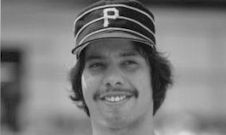

Despite a very public drug scandal and injuries that cut him off at the knee, Big Dave Parker still managed more than 2,700 hits, 339 career home runs, and 1,493 RBIs in his 19-year career. He spent the mandatory 15 years on the Hall of Fame ballot, but his highest support was 24.5 percent in his second year. The drugs and his failure to match the great seasons he had in his twenties hurt Parker’s image and chances for the Hall of Fame.
Exploring the greatest Pirates of all time is a fascinating dive into baseball history. Likewise, players can enhance their gaming experience with a no deposit bonus, providing a risk-free start to their online journey.

The best fielding second basemen in history, according to Career Runs Saved, are in order:
According to that stat, Maz saved twice as many runs as the ninth and tenth players on the list. All of these second basemen were very good at picking it, but Mazeroski’s reputation was the most impeccable.
He was called “No Touch” because he transferred the ball so quickly on the pivot. His range up the middle was amazing, he made plays beyond the bag in shallow center field that most people had never seen before, and his arm was very strong.

Leach was only 5’6 and 135 pounds when he was signed by Louisville in 1898. He was from western New York, grew up only a few houses away from the Delahanty’s, who sent five boys to the major leagues. At his first professional stops, Leach was fast, a hustler, and he distinguished himself with his glove, but early on he was overmatched at the plate. After finally breaking through with the bat, New York briefly gave Leach a tryout, but shooed him away, owner Andrew Freedman saying, “We don’t take midgets on the Giants.” Louisville wasn’t as picky, and owner Barney Dreyfuss plunked down $650 for Leach. He played 16 years for Dreyfuss.


Still adding to his career totals, but not in the black-and-gold. McCutchen was as fast as Max Carey and maybe just as good defensively in center field.

Relied on a fantastic curve ball and good control to win 194 games in 13 seasons, all spent with Pittsburgh. He won 66 percent of his decisions, one of the ten best rates in baseball history.
Leever was the best friend of teammate Deacon Phillippe, who won 189 games and was in the same pitching rotation with Sam for eleven years. Phillippe, Honus Wagner, and Leever frequently took hunting trips together.

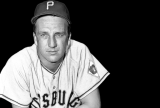
Kiner was major league-ready when he was 21 years old. But at that time he was flying anti-submarine missions for the U.S. Navy in the Pacific. As a rookie in 1946 he led the National League in home runs. He did the same thing for the next six years.
After he was traded to the Cubs (following protracted and nasty contract squabbles with the Pittsburgh front office), Kiner played in the same outfield with Hank Sauer. Both were dreadfully slow outfielders with weak throwing arms. The center fielder was Frank Baumholtz, a former college basketball star who could run, or at least he could run a helluva lot faster than the outfielders flanking him. When a ball was hit in the gap, Kiner and Sauer would frequently holler “You have plenty of room, Frankie!”

One of the most integral figures in the history of the Pittsburgh Pirates, Fred Clarke was player-manager during the deadball era, establishing the team as one of the most successful in baseball. Leading the team from his position in the outfield, the Bucs won four pennants and one world championship, and his teams won nearly 60 percent of their games. Under Clarke, the Pirates favored defense, pitching, and aggressive baserunning. He engaged in numerous battles with the other two dominant managers in the league at that time, John McGraw of the Giants and Frank Chance of the Cubs.
Clarke found his way to Pittsburgh under odd circumstances. In 1894 he was playing for Savannah in the Southern Association when his team found themselves stranded in Tennessee, unable to get back home. Barney Dreyfuss, owner of the Louisville team, wired the money needed to rescue the Savannah team. In return, he asked for Clarke to be transferred to his club. Dreyfuss later brought Clarke with him when he moves his franchise to Pittsburgh. Fred played 18 seasons for Dreyfuss.
Clarke’s innovations extended beyond the Burgh of Pitt, he invented a type of flip-down sunglasses, developed a new pitching rubber, and pioneered a mechanical method for rolling a tarp on and off the field. He spent sixteen years as the dominant personality of the Pittsburgh club until he retired with wealth and fame following the 1915 season, the winningest manager in baseball history to that point.
In his first retirement from baseball, Clarke bought a large tract of land and established Little Pirate Ranch in Kansas. But Dreyfuss summoned Clarke from retirement in 1925, seeking a spark for what he considered an underperforming team. Clarke, who also owned stock in the Pirates, was not hired as manager, but rather accepted a controversial role as “assistant to the manager”, who happened to be Bill McKechnie. The two men circled each other for the two seasons they shared the dugout, and initially the uneasy combination succeeded. The Pirates won 95 games in 1925 and captured their first pennant since Fearless Fred had guided them to the flag sixteen years earlier. The Pirates proceeded to win a thrilling seven-game World Series and Clarke received a share of the credit. One sportswriter wrote: “No one has learned just what prompted Barney Dreyfuss … to bring his former manager back into active service. The logical conclusion is that after the Pirates missed three or four pennants that seemed to be within their grasp, Dreyfuss decided that something was lacking and that Clarke could supply that particular something. He did.”
After a less successful follow up season sitting on the bench next to McKechnie, Clarke’s second retirement stuck: he returned to Little Pirate Ranch and tended to cattle. He was a land baron and a millionaire, and in 1945 he became a Hall of Famer when the veterans committee elected the famed Pirate to Cooperstown.
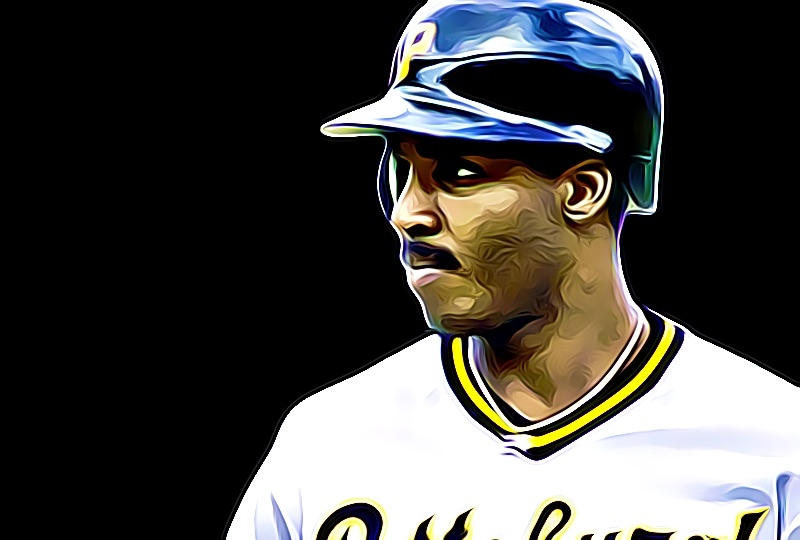

Entered the Pirates’ rotation as Sam Leever and Deacon Phillippe were fading out, and teamed with Babe Adams for a dozen seasons on the staff. Cooper won a franchise record 202 games, a figure that remains out of reach nearly a century after his final victory.
Many historians consider Cooper to be the greatest pitcher in Pirates’ history. He was a quick worker and he topped twenty wins four times.

Extremely private, Carey played twenty years in the major leagues and let few people get close to him. A teammate once said, “Max gets out of the clubhouse faster than he runs the bases.” Carey spent 17 seasons in a Pirates’ uniform and only counted one good friend on the team: Honus Wagner, who reluctantly mentored Carey when the youngster arrived in 1910 and proclaimed he was “here to take the shortstop job.”
Max played his first six seasons under Fred Clarke, but the two men quarreled and Carey was ecstatic when Clarke stepped aside as manager for the 1916 season. Later, Clarke returned as a bench coach and the two men fought after several incidents in the dugout boiled over.
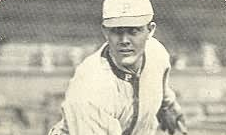

People probably said more nice things about Willie Stargell than any player in history, with the possible exception of Mariano Rivera. Maybe Bobby Doerr is in that conversation. When the Pirates held “Willie Stargell Day” in 1980, Houston second baseman Joe Morgan sent a telegram that read: “Some people are only superstars statistically, but you are a .400 hitter as a person. When I grow up, I want to be just like you.”

Like Alex Rodriguez, Robin Yount and Alan Trammell, Vaughan was a regular at the age of 20. But Vaughan was the least polished as a fielder, he averaged 40 errors per year in his first nine seasons. The Pirates enlisted Honus Wagner to tutor him, and the two even roomed together for a while. He settled in at shortstop and was passable, but it was a shift to third base that helped calm him down the last half of his career.
As a hitter, he was somewhat like Tony Gwynn, hitting the ball the opposite way a lot. He was very patient, he led the league in walks three times, and his career walk-to-strikeout ratio was an impressive 3-to-1. Among players with at least 2,000 hits, that ranks third behind only Joe Sewell and Tris Speaker.
Vaughan was only 40 years old when he drowned in Lost Lake in North Carolina. He was reportedly trying to save his friend, who could not swim.

Waner was convinced that alcohol was the secret to his baseball success, and he enjoyed plenty of both. He hit over .350 six times and had a cool .333 career average. In 1927, just his second season, he won the batting title, banged out 237 hits, and was named Most Valuable Player in the National League. That year he drove his brother Lloyd in 65 times, a record for most times one batter drove in another. He did it all while he was blasted.
“When I walked up there with a half-pint of whiskey fresh in my gut, that ball came in looking like a basketball. But if I hadn’t downed my half-pint of 100 proof, that ball came in like an aspirin tablet,” Paul said.
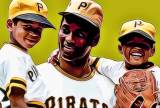
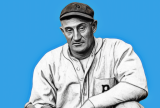
Wagner was a freak, one of those athletes who seemed genetically a generation ahead of his time. Like Wilt Chamberlain and Jim Brown, Joe Louis and Gordie Howe, and of course Babe Ruth a decade or so later, Wagner was just better than everyone else. He could throw harder, run faster, hit the ball farther than anyone else. The game came easy to him, and he could outthink the other players on the diamond too. John McGraw said that no shortstop he ever saw could go as deep in the hole to get the ball like Honus. In comparison to his league, Wagner’s statistics are more impressive than anyone other than the Bambino.
This feature list was written by Dan Holmes, founder of Baseball Egg. Dan is author of three books on baseball, including Ty Cobb: A Biography, The Great Baseball Argument Settling Book, and more. He previously worked as a writer and digital producer for the National Baseball Hall of Fame, as well as Major League Baseball Advanced Media.
No reproduction of this content is permitted without permission of the copyright holder. Links and shares are welcome.